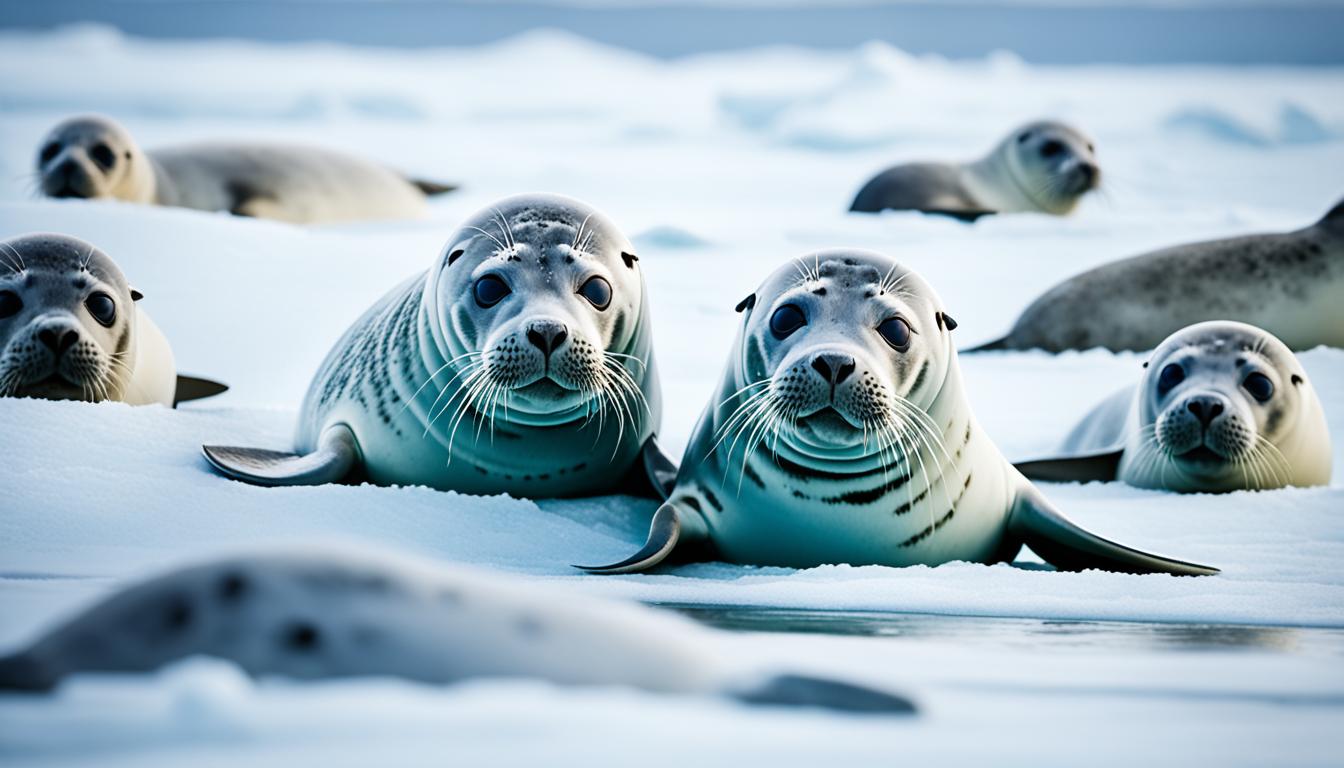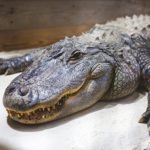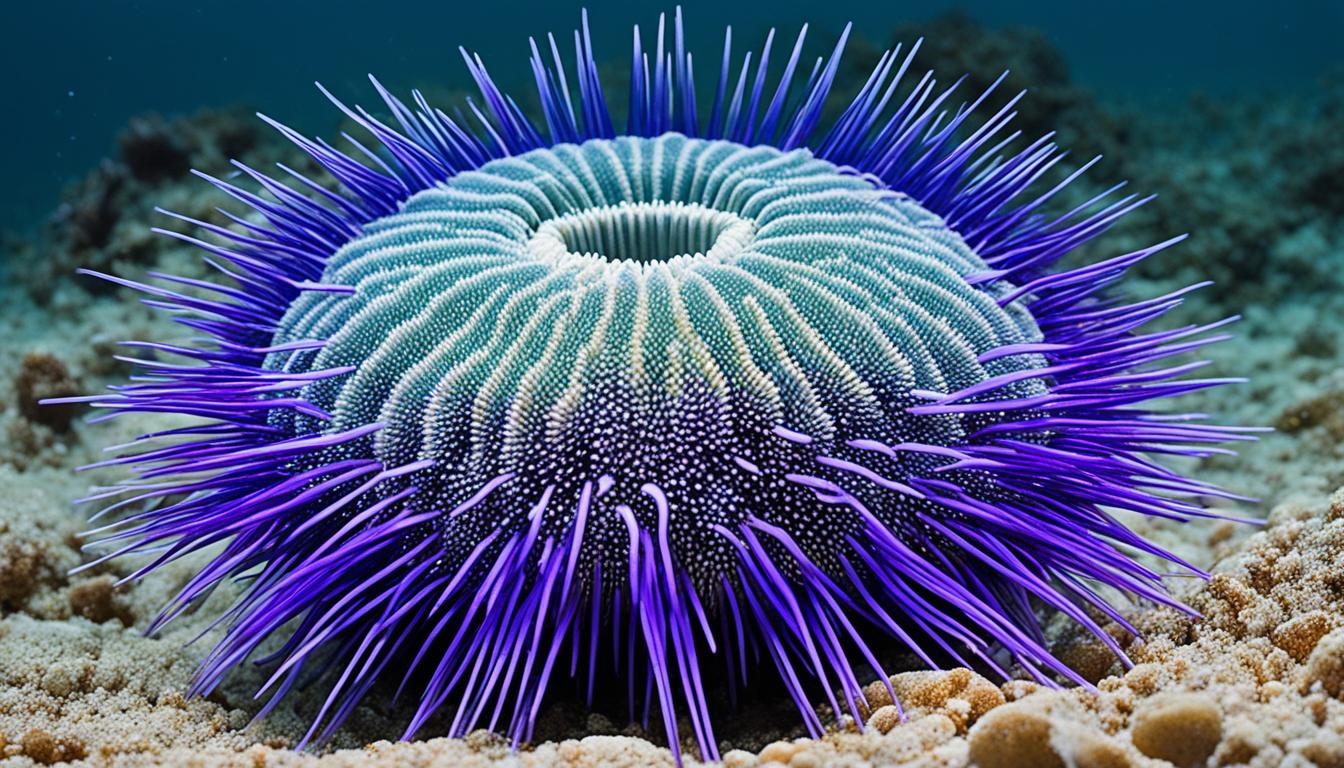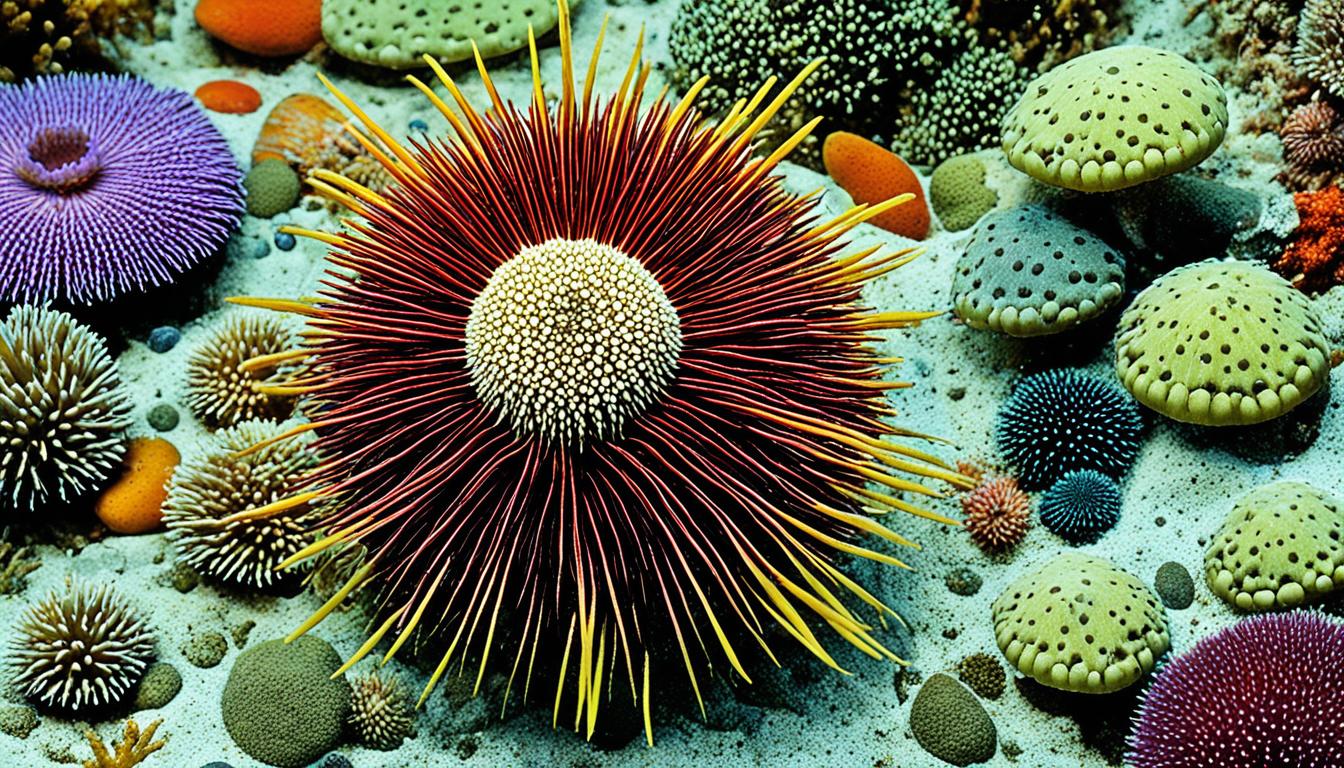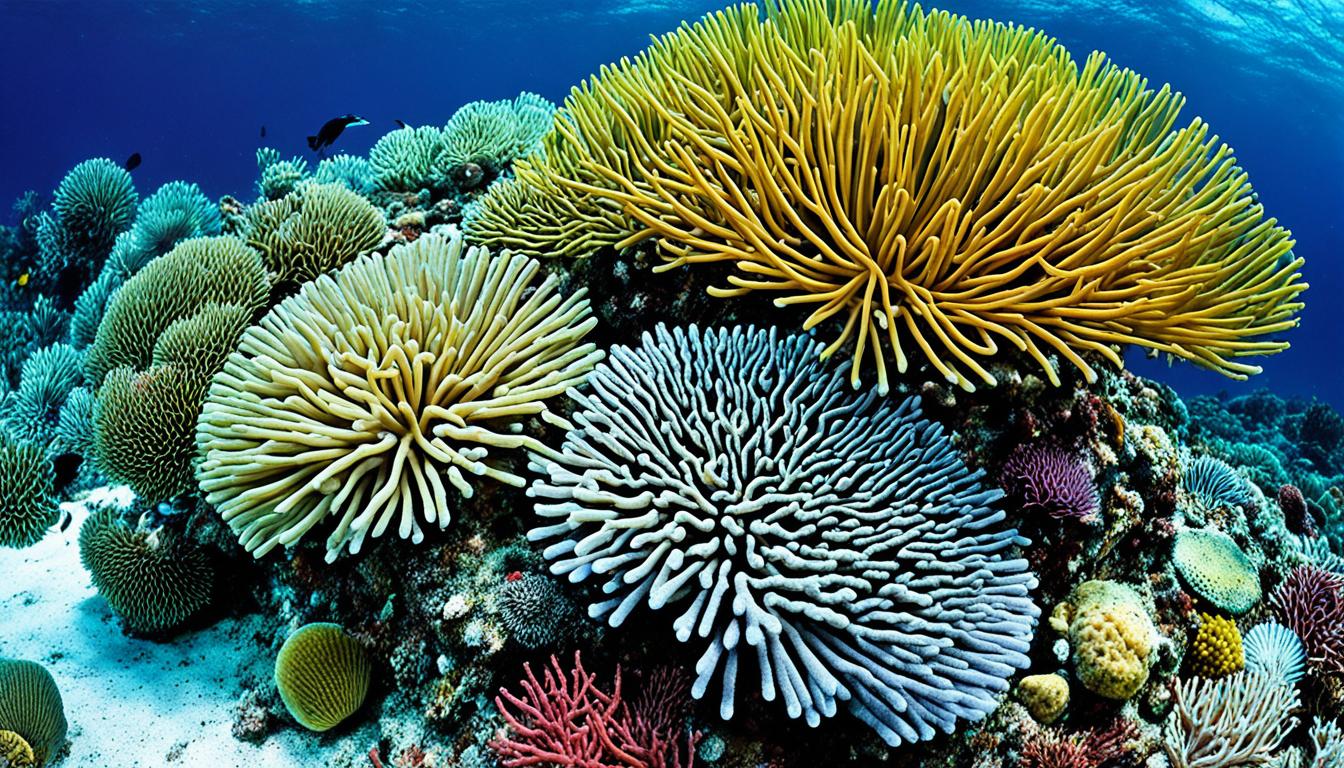Seals are amazing marine mammals that have special traits for living in cold places. You might wonder how they survive in the icy waters of the Arctic and Antarctic. These creatures, part of the pinniped family, have both physical and behavioral traits that help them in the cold.
Learning about their adaptations shows how seals can live in icy waters with very low temperatures. Every seal species has its own special features for its home, showing how well they can handle the cold. This sets the stage for looking closer at how seals adapt in the next sections.
The Various Species of Seals in Cold Climates
Seals in cold climates show a wide variety, with six main species in Antarctica and the Sub-Antarctic. Each one has special traits that help them survive in tough places.
- Ross Seals: These seals are agile and live in pack ice areas.
- Weddell Seals: They are great at diving deep and breed on sea ice, perfect for cold waters.
- Crabeater Seals: They have special teeth for filtering krill from the water.
- Leopard Seals: Being top predators, they have strong jaws and hunt seals and penguins.
- Fur Seals: Eared seals like the Antarctic fur seal live on land and use both land and water.
- Southern Elephant Seals: The biggest seals, they form large groups on land and dive very deep.
Learning about these species shows how amazing Antarctic seal adaptations are. You’ll see big differences between true seals and eared seals in looks and how they live. This shows how complex cold climate ecosystems are.
How do seals adapt to cold environments?
Seals have special traits that let them live in very cold places. These traits help them survive in some of the coldest spots on Earth. They show how true seals and eared seals are different, and how they live in Antarctic and Sub-Antarctic areas.
Unique Characteristics of True Seals and Eared Seals
True seals, or phocids, have special body features that help them survive. They don’t have outer ear flaps and their front flippers are shorter. But, they use their big hind flippers to swim well. They also have a thick layer of blubber to keep warm.
Eared seals, or otarids, have visible ear flaps and longer front flippers. These help them move on land. Their fur also helps keep them warm. These traits are key to how seals survive in very cold places.
Overview of Antarctic and Sub-Antarctic Species
Seals in the Antarctic and Sub-Antarctic have special traits for their homes. The crabeater seal has special teeth for eating krill, a key food in these waters. Different species have different places to breed, like ice for Weddell seals and land for fur seals.
This shows how the environment affects seals’ biology and behavior. It also shows how they adapt to survive in icy places.
| Species | Type | Feeding Mechanism | Breeding Habitat |
|---|---|---|---|
| Weddell Seal | True Seal | Primarily fish and squid | Ice |
| Crabeater Seal | True Seal | Krill | Ice |
| Fur Seal | Eared Seal | Fish and krill | Land |
| Elephant Seal | True Seal | Fish and squid | Land |
Physiological Adaptations for Thermal Regulation
Seals survive in cold places thanks to their amazing body changes. They have special ways to keep their body temperature steady in the cold. These include blubber and genetic changes that help them live in icy waters.
The Role of Blubber Insulation in Body Temperature Control
Blubber is a thick fat layer under a seal’s skin. It does more than just make them look cute. It acts as blubber insulation, keeping them warm in cold water. This fat traps heat, helping seals keep their core temperature steady even when the ocean is freezing.
This insulation also stores energy when food is scarce. Seals control their body heat by changing how they position their flippers at the surface. This is key to seal thermal regulation.
Special Genetic Adaptations in Weddell Seals
The Weddell seal has unique genetic adaptations. Scientists have found special genes that help them handle high levels of fat in their blood. These genes help build thick blubber layers for keeping warm and storing energy.
This ability to move fats around is crucial for nursing mothers. They give their babies milk full of nutrients. These adaptations show how Weddell seals can survive despite the challenges of high fat levels.
Feeding Habits and Their Importance to Survival
Seals have special ways of eating that help them live in cold places. Each type of seal eats differently, showing how they’ve adapted to survive in tough conditions.
Nocturnal Foraging Strategies of Seals
Seals hunt at night using special strategies that help them catch food. At night, krill and other sea creatures move closer to the surface. Seals use their diving skills to hunt then, getting more food when it’s easier to find.
Dietary Differences Between Seal Species
Seals eat differently, showing their unique roles in the ocean. For example:
| Seal Species | Main Diet | Specialization |
|---|---|---|
| Crabeater Seal | Krill | Unique teeth adapted for filtering |
| Leopard Seal | Fish, penguins, seal pups | Wide-ranging diet |
| Southern Elephant Seal | Fish, squid | Deep diving for food |
This table shows how different seals eat and how they adapt to their environments. Each seal’s diet is key to their survival, showing how their eating habits and their place in nature are connected.
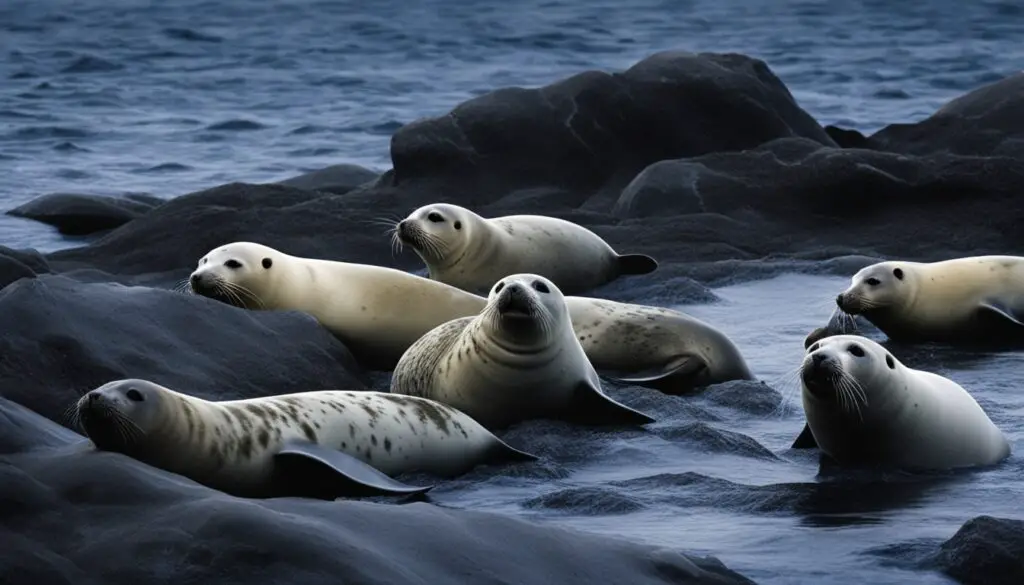
Behavioral Adaptations for Cold Environments
Seal species have different breeding behaviors that help them survive in cold climates. It’s important to know how ice and land-dwelling seals adapt to their environments. This knowledge helps us understand their unique ways of thriving.
Ice Breeding Versus Terrestrial Breeding Species
Ice breeding species, like the Weddell seal, choose stable ice for giving birth. This protects them from predators. On the other hand, terrestrial breeding seals, such as fur seals, face threats on land during breeding. Their choice of location shows how they’ve adapted to survive.
This difference helps us see how seals use their environment for breeding. It also shows how they ensure their survival in tough conditions.
Social Structure and Breeding in Extreme Conditions
Seals’ social structure is key to their breeding success. Some form large groups where dominant males have harems of females. This leads to fierce competition, especially in fur seals who use their fat reserves to win these battles.
Other seals prefer to breed alone. These different social behaviors show how seals adapt to harsh conditions. They ensure their species continues despite the challenges.
Diving Abilities and Adaptations of Seals
Seals have amazing diving skills that help them live in cold oceans. These skills are key for hunting and show off their amazing body features.
How Seals Manage Oxygen Levels During Deep Dives
Seals are experts at managing oxygen while diving deep. The Southern Elephant seal can dive for up to two hours. They use several strategies to save oxygen:
- Exhaling before diving to reduce buoyancy.
- Slowing their heart rate to conserve oxygen.
- Prioritizing blood flow to essential organs, minimizing energy expenditure.
These seal diving adaptations help them dive deep and manage their oxygen well. This is key for long hunting trips.
Specialized Eyes for Underwater Vision
Seals have eyes made for seeing underwater. Their eyes are designed for low light, helping them hunt well under the waves. Key features include:
- A greater density of rod cells for better motion detection.
- Elongated lenses that improve focus at varying depths.
- Reflective tapetum lucidum to enhance visibility in dark waters.
These features let seals find and catch prey in icy waters. Learning about these traits shows how nature shapes animals for their environments.
Impact of Climate Change on Seal Adaptations
Seals have adapted to live in cold environments, but climate change is making it harder for them. Rising temperatures and melting ice are changing their homes and food sources. Seals must adapt more to survive as their habitats change.
This change affects their food and how they live with other animals. It can upset the balance in their ecosystems.
How Cold Adaptation of Seals Influences Their Survival
Seals need cold conditions to survive. They use ice for breeding and finding food. But as ice melts, they must change how they live to survive.
This means they might have to fight more for food and space. Climate change is making it harder for seals to find what they need to live.
Potential Changes in Behavior and Habitat Utilization
Seals will likely change how they behave as the climate changes. They might move to new places to breed because their old ones are no longer good. They will also have to find new ways to hunt because of the less ice and fewer fish.
These changes could affect how seals live with each other and with other animals. It’s important to understand these changes to help protect seals from climate change.
| Aspect | Current Situation | Projected Change |
|---|---|---|
| Ice Coverage | Stable breeding and foraging grounds | Reduced availability leading to migration |
| Food Sources | Abundant prey availability | Decreased prey density |
| Competition Levels | Low competition for resources | Increased competition among seal species |
| Breeding Sites | Secure and accessible locations | Shifts to less optimal breeding sites |
Conservation Efforts for Seals in Cold Habitats
Protecting seals in cold places is more important than ever because of climate change and human actions. Groups and governments around the world are working hard to save seals. They want to protect their homes and keep their numbers healthy. Laws like the Marine Mammal Protection Act in the U.S. help by making it illegal to harm marine mammals.
Keeping their homes safe is key to saving seals. Projects aim to protect places where seals live, breed, and find food. These areas are vital for raising young seals and getting the food they need. By keeping these places safe, we can help seals adapt to a changing climate.
Research is also crucial in saving seals. Scientists study seals to understand their lives and the dangers they face. This helps them come up with plans to tackle these problems. With a detailed plan, we can all work together to save these amazing sea creatures for the future.

